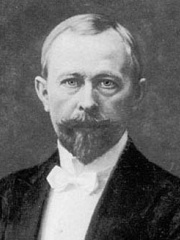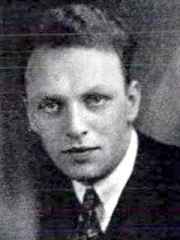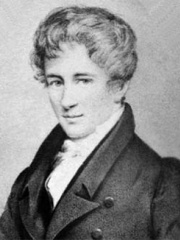
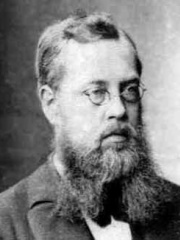
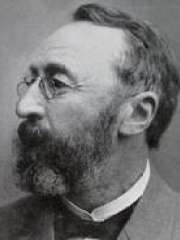

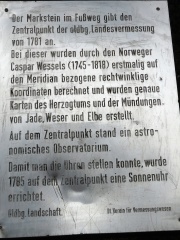
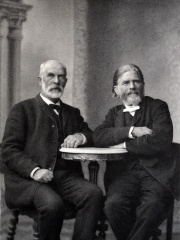
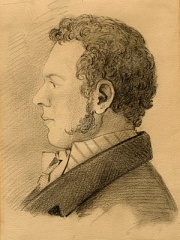
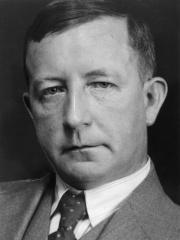
The Most Famous
MATHEMATICIANS from Norway
This page contains a list of the greatest Norwegian Mathematicians. The pantheon dataset contains 1,004 Mathematicians, 12 of which were born in Norway. This makes Norway the birth place of the 19th most number of Mathematicians behind Egypt, and Türkiye.
Top 10
The following people are considered by Pantheon to be the top 10 most legendary Norwegian Mathematicians of all time. This list of famous Norwegian Mathematicians is sorted by HPI (Historical Popularity Index), a metric that aggregates information on a biography's online popularity. Visit the rankings page to view the entire list of Norwegian Mathematicians.

1. Niels Henrik Abel (1802 - 1829)
With an HPI of 79.17, Niels Henrik Abel is the most famous Norwegian Mathematician. His biography has been translated into 88 different languages on wikipedia.
Niels Henrik Abel ( AH-bəl, Norwegian: [ˌnɪls ˈhɛ̀nːɾɪk ˈɑ̀ːbl̩]; 5 August 1802 – 6 April 1829) was a Norwegian mathematician who made pioneering contributions in a variety of fields. His most famous single result is the first complete proof demonstrating the impossibility of solving the general quintic equation in radicals. This question was one of the outstanding open problems of his day, and had been unresolved for over 250 years. He was also an innovator in the field of elliptic functions and the discoverer of Abelian functions. He made his discoveries while living in poverty and died at the age of 26 from tuberculosis. Most of his work was done in six or seven years of his working life. Regarding Abel, the French mathematician Charles Hermite said: "Abel has left mathematicians enough to keep them busy for five hundred years." Another French mathematician, Adrien-Marie Legendre, said: "What a head the young Norwegian has!"

2. Sophus Lie (1842 - 1899)
With an HPI of 68.67, Sophus Lie is the 2nd most famous Norwegian Mathematician. His biography has been translated into 49 different languages.
Marius Sophus Lie ( LEE; Norwegian: [liː]; 17 December 1842 – 18 February 1899) was a Norwegian mathematician. He largely created the theory of continuous symmetry and applied it to the study of geometry and differential equations. He also made substantial contributions to the development of algebra.

3. Peter Ludwig Mejdell Sylow (1832 - 1918)
With an HPI of 67.79, Peter Ludwig Mejdell Sylow is the 3rd most famous Norwegian Mathematician. His biography has been translated into 27 different languages.
Peter Ludvig Meidell Sylow (Norwegian pronunciation: [ˈsaɪloʊ]) (12 December 1832 – 7 September 1918) was a Norwegian mathematician who proved foundational results in group theory. Sylow processed and further developed the innovative works of mathematicians Niels Henrik Abel and Évariste Galois in algebra. Sylow theorems and p-groups, known as Sylow subgroups, are fundamental in finite groups. By profession, Sylow was a teacher at the Fredrikshald Latin School (Norwegian: Fredrikshalds lærde og realskole) for 40 years from 1858 to 1898, and then a professor at the University of Oslo for 20 years from 1898 to 1918. Despite the isolation in Frederikshald, Sylow was an active member of the mathematical world. He wrote a total of approximately 25 mathematical and biographical works, corresponded with many of the leading mathematicians of the time, and was an able co-editor of Acta Mathematica from the journal's start in 1882. He was also elected into the Norwegian Academy of Science and Letters in 1868, a corresponding member of the Academy of Sciences in Göttingen and the University of Copenhagen awarded him an honorary doctorate in 1894.

4. Atle Selberg (1917 - 2007)
With an HPI of 64.97, Atle Selberg is the 4th most famous Norwegian Mathematician. His biography has been translated into 42 different languages.
Atle Selberg (14 June 1917 – 6 August 2007) was a Norwegian mathematician known for his work in analytic number theory and the theory of automorphic forms, and in particular for bringing them into relation with spectral theory. He was awarded the Fields Medal in 1950 and an honorary Abel Prize in 2002.

5. Viggo Brun (1885 - 1978)
With an HPI of 63.53, Viggo Brun is the 5th most famous Norwegian Mathematician. His biography has been translated into 27 different languages.
Viggo Brun (13 October 1885 – 15 August 1978) was a Norwegian professor, mathematician and number theorist.

6. Caspar Wessel (1745 - 1818)
With an HPI of 63.37, Caspar Wessel is the 6th most famous Norwegian Mathematician. His biography has been translated into 28 different languages.
Caspar Wessel (8 June 1745 – 25 March 1818) was a Danish–Norwegian mathematician and cartographer. In 1799, Wessel was the first person to describe the geometrical interpretation of complex numbers as points in the complex plane and vectors.

7. Cato Maximilian Guldberg (1836 - 1902)
With an HPI of 61.41, Cato Maximilian Guldberg is the 7th most famous Norwegian Mathematician. His biography has been translated into 25 different languages.
Cato Maximilian Guldberg (11 August 1836 – 14 January 1902) was a Norwegian mathematician and chemist. Guldberg is best known as a pioneer in physical chemistry.

8. Bernt Michael Holmboe (1795 - 1850)
With an HPI of 59.06, Bernt Michael Holmboe is the 8th most famous Norwegian Mathematician. His biography has been translated into 22 different languages.
Bernt Michael Holmboe (23 March 1795 – 28 March 1850) was a Norwegian mathematician. He was home-tutored from an early age, and was not enrolled in school until 1810. Following a short period at the Royal Frederick University, which included a stint as assistant to Christopher Hansteen, Holmboe was hired as a mathematics teacher at the Christiania Cathedral School in 1818, where he met the future renowned mathematician Niels Henrik Abel. Holmboe's lasting impact on mathematics worldwide has been said to be his tutoring of Abel, both in school and privately. The two became friends and remained so until Abel's early death. Holmboe moved to the Royal Frederick University in 1826, where he worked until his own death in 1850. Holmboe's significant impact on mathematics in the fledgling Norway was his textbook in two volumes for secondary schools. It was widely used, but faced competition from Christopher Hansteen's alternative offering, sparking what may have been Norway's first debate about school textbooks.

9. Thoralf Skolem (1887 - 1963)
With an HPI of 57.71, Thoralf Skolem is the 9th most famous Norwegian Mathematician. His biography has been translated into 25 different languages.
Thoralf Albert Skolem (Norwegian: [ˈtûːrɑɫf ˈskûːlɛm]; 23 May 1887 – 23 March 1963) was a Norwegian mathematician who worked in mathematical logic and set theory.
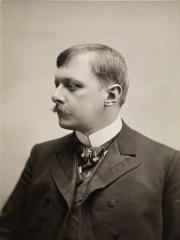
10. Carl Størmer (1874 - 1957)
With an HPI of 57.29, Carl Størmer is the 10th most famous Norwegian Mathematician. His biography has been translated into 24 different languages.
Fredrik Carl Mülertz Størmer (Norwegian pronunciation: [fʁɛdʁɪk kaːl ˈmʏlɐːt͡s ̍ˈʃtøːmɐː]) (3 September 1874 – 13 August 1957) was a Norwegian mathematician and astrophysicist. In mathematics, he is known for his work in number theory, including the calculation of π and Størmer's theorem on consecutive smooth numbers. In physics, he is known for studying the movement of charged particles in the magnetosphere and the formation of aurorae, and for his book on these subjects, From the Depths of Space to the Heart of the Atom. He worked for many years as a professor of mathematics at the University of Oslo in Norway. A crater on the far side of the Moon is named after him.
People
Pantheon has 12 people classified as Norwegian mathematicians born between 1745 and 1917. Of these 12, none of them are still alive today. The most famous deceased Norwegian mathematicians include Niels Henrik Abel, Sophus Lie, and Peter Ludwig Mejdell Sylow.
Deceased Norwegian Mathematicians
Go to all RankingsNiels Henrik Abel
1802 - 1829
HPI: 79.17
Sophus Lie
1842 - 1899
HPI: 68.67
Peter Ludwig Mejdell Sylow
1832 - 1918
HPI: 67.79
Atle Selberg
1917 - 2007
HPI: 64.97
Viggo Brun
1885 - 1978
HPI: 63.53
Caspar Wessel
1745 - 1818
HPI: 63.37
Cato Maximilian Guldberg
1836 - 1902
HPI: 61.41
Bernt Michael Holmboe
1795 - 1850
HPI: 59.06
Thoralf Skolem
1887 - 1963
HPI: 57.71
Carl Størmer
1874 - 1957
HPI: 57.29
Axel Thue
1863 - 1922
HPI: 57.09
Øystein Ore
1899 - 1968
HPI: 54.02
Overlapping Lives
Which Mathematicians were alive at the same time? This visualization shows the lifespans of the 11 most globally memorable Mathematicians since 1700.

